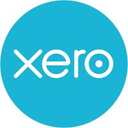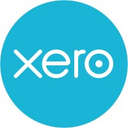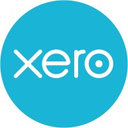Cube vs Xero (2025 Comparison)

Cube is a robust financial planning tool with advanced features and seamless spreadsheet integration. Its customizable dashboards provide real-time insights, making it a valuable asset for finance teams.
- Advanced financial planning features
- Seamless spreadsheet integration
- Customizable dashboards
- Limited invoicing capabilities
- Higher learning curve
- Less intuitive for non-finance users
Free plan?
NoStarting price
$2000 per month
Xero offers a user-friendly interface and comprehensive invoicing tools. Its strong bank reconciliation and intuitive design make it a popular choice for small business owners and accountants.
- User-friendly interface
- Comprehensive invoicing tools
- Strong bank reconciliation
- Limited forecasting features
- Higher cost for premium plans
- Less focus on financial planning
Free plan?
YesStarting price
$2.90 per monthWhat is Cube?
Cube is a powerful financial planning and analysis tool designed to streamline budgeting, forecasting, and reporting processes. It integrates seamlessly with existing spreadsheets and financial systems, providing real-time insights and analytics. Cube helps finance teams make data-driven decisions by automating manual tasks and offering customizable dashboards. With its user-friendly interface, Cube empowers users to collaborate effectively, ensuring accuracy and efficiency in financial planning. Whether you're a small business or a large enterprise, Cube adapts to your needs, making financial management a breeze.
What is Xero?
Xero is a cloud-based accounting software tailored for small to medium-sized businesses. It simplifies financial management by offering features like invoicing, bank reconciliation, and expense tracking. Xero's intuitive interface and robust integrations with various apps make it a favorite among business owners and accountants. It provides real-time financial data, helping users make informed decisions. With Xero, you can manage your finances from anywhere, ensuring your business runs smoothly and efficiently. It's an ideal solution for those seeking a reliable and comprehensive accounting tool.
Pros and Cons of Cube vs Xero

Pros & Cons of Cube
- Cube offers a suite of advanced financial planning features that cater to the needs of finance professionals. Its tools are designed to streamline budgeting, forecasting, and reporting processes, making it a valuable asset for businesses.
- Cube integrates seamlessly with existing spreadsheets, allowing users to import and manage data effortlessly. This integration enhances the tool's functionality, making it a preferred choice for finance teams.
- Cube's customizable dashboards provide real-time insights, enabling users to make data-driven decisions. These dashboards are tailored to meet the unique needs of each business, enhancing the tool's versatility.
- Cube's invoicing capabilities are limited compared to specialized accounting tools. While it offers basic invoicing features, businesses focused on invoicing efficiency may find it lacking.
- Cube's advanced features come with a higher learning curve, requiring users to invest time in understanding its functionalities. This may pose a challenge for new users or those unfamiliar with financial planning tools.

Pros & Cons of Xero
- Xero's user-friendly interface makes it accessible to users of all skill levels. Its intuitive design simplifies financial management, making it a popular choice among small business owners and accountants.
- Xero offers comprehensive invoicing tools that streamline the invoicing process. Its integration with payment gateways ensures seamless transactions, enhancing the tool's efficiency.
- Xero excels in bank reconciliation, offering automated processes that save time and reduce errors. Its integration with banks ensures real-time updates, making it a reliable choice for businesses.
- Xero's forecasting features are limited compared to specialized financial planning tools. While it offers basic forecasting capabilities, businesses seeking advanced forecasting may find it insufficient.
- Xero's premium plans come at a higher cost, which may be a consideration for budget-conscious businesses. While the tool offers extensive features, the cost may be a barrier for some users.
Cube vs Xero: At A Glance
Value to Price
Cube offers a competitive pricing model that aligns well with its robust features, making it a cost-effective choice for businesses seeking comprehensive financial planning tools. Xero, on the other hand, provides excellent value for money with its extensive accounting features, making it ideal for small to medium-sized businesses. If you're looking for a tool that offers great value for its price, Xero might be the better option.
Ease of Use
Cube's user-friendly interface makes it easy for finance teams to navigate and utilize its features effectively. Xero excels in this dimension with its intuitive design, allowing even non-accountants to manage finances effortlessly. If ease of use is a priority, Xero stands out as the more accessible option.
Functionality
Cube provides a wide range of functionalities tailored for financial planning and analysis, making it a versatile tool for finance professionals. Xero offers comprehensive accounting features, including invoicing and bank reconciliation, catering to the needs of small businesses. If you require extensive accounting functionalities, Xero is the superior choice.
Scalability
Cube is designed to scale with your business, offering features that grow with your financial needs. Xero also provides scalability, accommodating the growth of small to medium-sized businesses. If scalability is crucial, Cube offers a slightly better fit for larger enterprises.
Integrations
Cube integrates seamlessly with various financial systems and spreadsheets, enhancing its functionality. Xero boasts a wide range of integrations with popular apps, making it a versatile choice for businesses seeking connectivity. If integrations are a priority, Xero offers a broader range of options.
Customer Support
Cube provides reliable customer support, ensuring users receive assistance when needed. Xero is known for its responsive support team, offering timely help to its users. If customer support is a deciding factor, Xero's reputation for excellent service makes it a strong contender.
Security
Cube prioritizes security, implementing robust measures to protect financial data. Xero also emphasizes security, ensuring user data is safeguarded. If security is a top concern, both tools offer reliable protection, but Xero's established reputation gives it a slight edge.
Overall Rating
Cube is a strong contender in the financial planning space, offering a comprehensive suite of features. Xero excels in accounting functionalities, making it a preferred choice for small businesses. If you're seeking an all-encompassing accounting solution, Xero's overall rating reflects its superiority.
Cube vs Xero: A Detailed Breakdown of Key Features
Budgeting
Cube excels in budgeting, offering advanced features that allow you to create detailed financial plans. Its integration with spreadsheets makes it easy to import and manage data. Xero, while providing budgeting capabilities, is more focused on accounting tasks. If budgeting is your primary concern, Cube offers a more comprehensive solution.
Forecasting
Cube's forecasting tools are robust, enabling users to predict financial trends with accuracy. Its customizable dashboards provide real-time insights, making it a valuable tool for finance teams. Xero offers basic forecasting features, but Cube's advanced capabilities make it the better choice for detailed financial forecasting.
Reporting
Both Cube and Xero offer strong reporting features, but Cube's customizable reports and real-time analytics give it an edge. Xero's reports are user-friendly and cater to small business needs. If you require in-depth reporting, Cube's features are more suited to your needs.
Invoicing
Xero shines in invoicing, providing a seamless process for creating and sending invoices. Its integration with payment gateways simplifies transactions. Cube offers invoicing features, but Xero's specialized tools make it the preferred choice for businesses focused on invoicing efficiency.
Expense Tracking
Xero's expense tracking is intuitive, allowing users to manage expenses effortlessly. Its mobile app enhances convenience, making it easy to track expenses on the go. Cube offers expense tracking, but Xero's user-friendly interface makes it the better option for businesses prioritizing expense management.
Bank Reconciliation
Xero excels in bank reconciliation, offering automated processes that save time and reduce errors. Its integration with banks ensures real-time updates. Cube provides bank reconciliation features, but Xero's automation and accuracy make it the superior choice for businesses seeking efficient reconciliation.
Pricing Comparison of Cube and Xero
To assist you in making an informed choice, we’ve outlined the pricing plans and essential features of Cube and Xero. This comparison will highlight the best option for managing your financial needs.

Cube Pricing Plans
- Unlimited users to collaborate without restrictions.
- Unlimited saved templates for efficient planning.
- Unlimited dimensions for comprehensive data analysis.
- Up to 10 connected data sources included in platform subscription.

Xero Pricing Plans
- Enter up to 5 bills for efficient tracking.
- Reconcile bank transactions with ease.
- Capture bills and receipts using Hubdoc integration.
- Access short-term cash flow and business snapshot.
- Enter unlimited bills for comprehensive tracking.
- Bulk reconcile transactions for efficiency.
- Advanced reporting and analytics for insights.
- Enhanced security features for data protection.
- Advanced project tracking and management tools.
- Priority customer support for quick resolutions.
- Comprehensive expense management features.
- Customizable dashboards for personalized insights.
Our Rating Methodology
We rigorously evaluate each financial management tool, focusing on key aspects like functionality, ease of use, and scalability. By analyzing user feedback and conducting thorough testing, we ensure our recommendations align with your needs. Each factor is weighted to provide an accurate final rating, helping you make informed decisions.
Cube or Xero: Which One Matches Your Business Needs?
Choose Cube If You Need ...
- Advanced financial planning features
If you require a tool with advanced financial planning features, Cube is the ideal choice. Its robust functionalities cater to the needs of finance professionals, making it a valuable asset for businesses seeking comprehensive financial management solutions.
- Seamless spreadsheet integration
If seamless spreadsheet integration is a priority, Cube offers the perfect solution. Its ability to integrate with existing spreadsheets enhances its functionality, making it a preferred choice for finance teams seeking efficient data management.
Choose Xero If You Need ...
- User-friendly interface
If you value a user-friendly interface, Xero is the better option. Its intuitive design simplifies financial management, making it accessible to users of all skill levels. It's an excellent choice for small business owners and accountants.
- Comprehensive invoicing tools
If comprehensive invoicing tools are essential, Xero stands out as the superior choice. Its seamless integration with payment gateways ensures efficient transactions, making it a reliable option for businesses focused on invoicing efficiency.
Frequently Asked Questions
 Which tool is better for small businesses?
Which tool is better for small businesses?
 Does Cube offer better forecasting features than Xero?
Does Cube offer better forecasting features than Xero?
 Which tool provides better customer support?
Which tool provides better customer support?
 Is Xero more cost-effective than Cube?
Is Xero more cost-effective than Cube?
 Which tool is better for financial planning?
Which tool is better for financial planning?
 Does Xero offer better integrations than Cube?
Does Xero offer better integrations than Cube?

Martin Lunendonk
Martin Lunendonk is a senior tech writer specializing in website builders, web hosting, and ecommerce platforms. With a background in finance, accounting, and philosophy, he has founded multiple tech startups and worked in medium to large tech companies and investment banking, bringing deep expertise and reliable insights to his software reviews.



